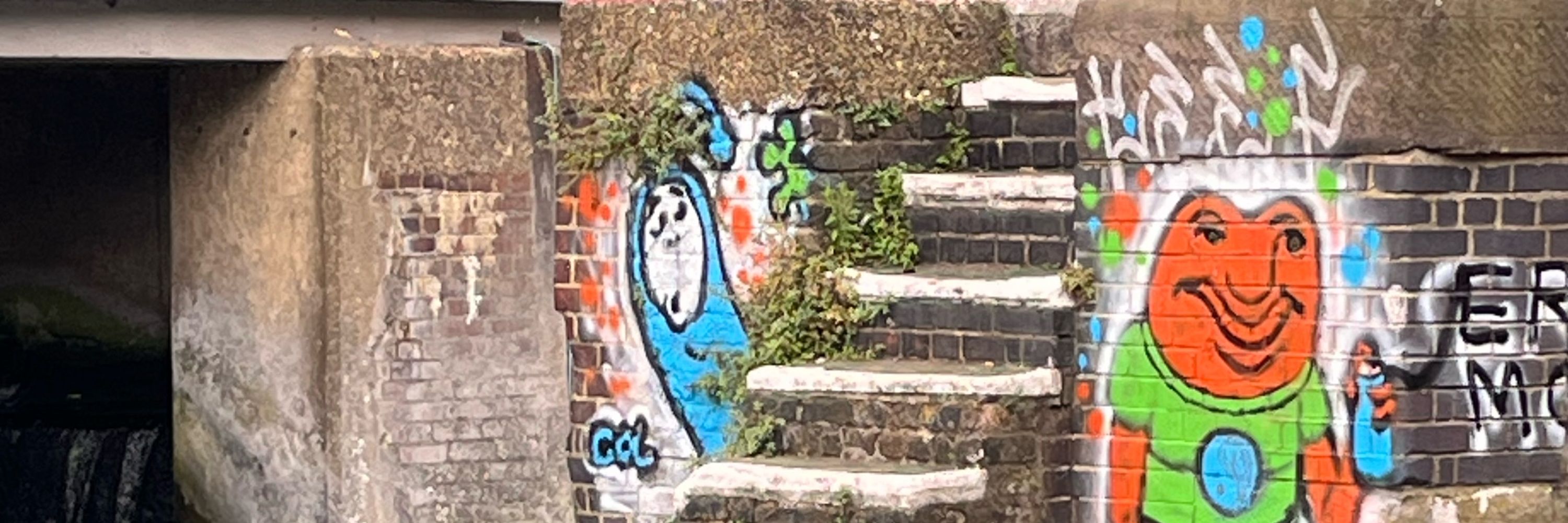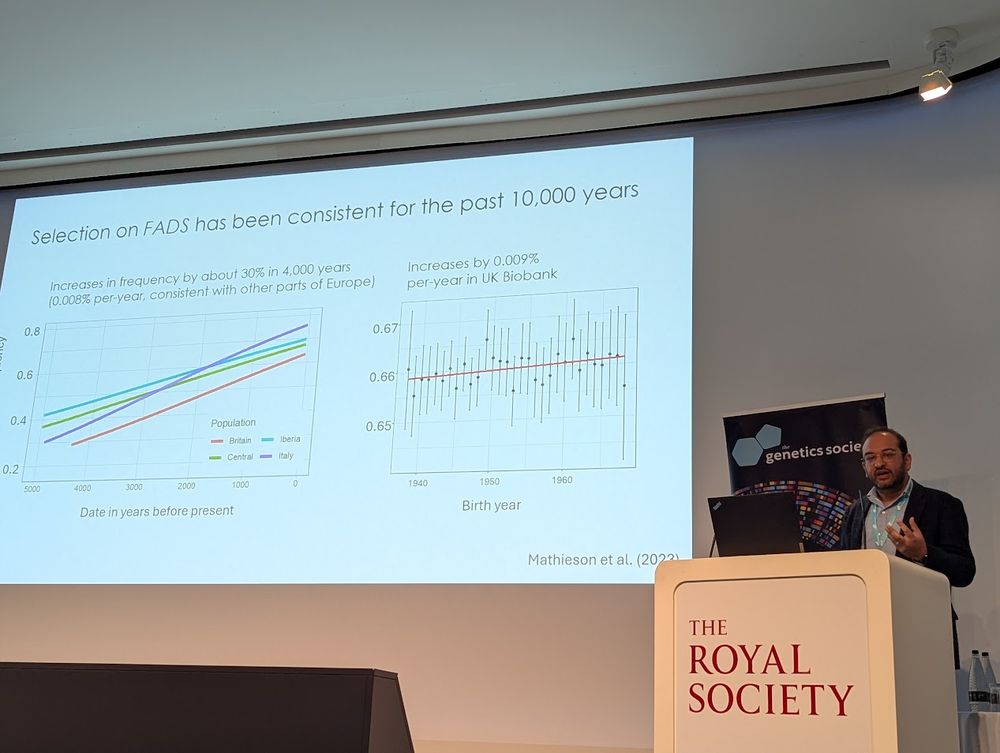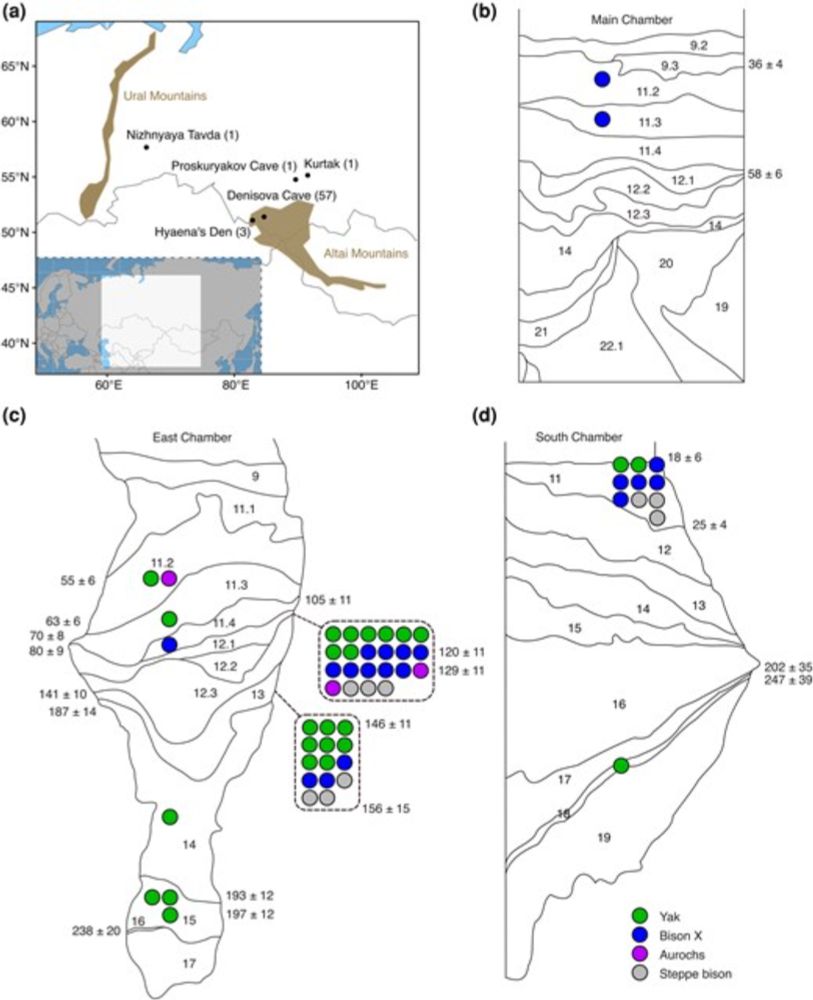
Ancient DNA Lab @ The Francis Crick Institute
Associate Lecturer in Quantitative Archaeology and Later European Prehistory @ UCL Institute of Archaeology

www.digitscotland.com/what-can-arc...

www.newyorker.com/magazine/202...

www.newyorker.com/magazine/202...
“Don’t worry, he’s pescatarian.”
Our latest in @pnas.org uncovers a surprise three to five thousand years ago: 2 canids in human contexts on a tiny island in the middle of the Baltic Sea, that ate marine food—but had 100% gray wolf ancestry.
Where they tame wolves, or even an incipient domestication?
“Don’t worry, he’s pescatarian.”
Our latest in @pnas.org uncovers a surprise three to five thousand years ago: 2 canids in human contexts on a tiny island in the middle of the Baltic Sea, that ate marine food—but had 100% gray wolf ancestry.
Where they tame wolves, or even an incipient domestication?

“Don’t worry, he’s pescatarian.”
Thanks to Wenner Gren for funding the workshop it emerged from!
www.journals.uchicago.edu/doi/10.1086/...
Thanks to Wenner Gren for funding the workshop it emerged from!
www.journals.uchicago.edu/doi/10.1086/...


![Sikora et al. 2025 (https://doi.org/10.1038/s41586-025-09192-8), Main text (p. 1015), on leprosy:
"We also report new cases of other bacterial pathogens previously detected in paleogenomic data. The leprosy-causing bacterium M. leprae was identified in seven individuals (0.5% detection rate) from Scandinavia and only appeared from the Late Iron Age onwards (earliest case RISE174, 1,523-1,339 cal. bp). Because M. leprae can infect both red squirrels and humans[35], and archaeological evidence demonstrates that fur trade from Scandinavia, including squirrel fur, increased substantially during the late Iron and Viking Ages[36], our results support the suggestion that squirrel fur trade could have facilitated transmission[37]. Our findings are also consistent with the widespread distribution of leprosy in medieval Europe[38]."](https://cdn.bsky.app/img/feed_thumbnail/plain/did:plc:twqucin7jqhlteuk37lqltr7/bafkreidq7hry63vk5s3dahnachlqoqf5tfxhefuwu3fsrh73gfwwelsq6u@jpeg)


It was an amazing set of talks and posters. Thanks to the @gensocuk.bsky.social, co-host @janetk.bsky.social and all participants for a great day!




It was an amazing set of talks and posters. Thanks to the @gensocuk.bsky.social, co-host @janetk.bsky.social and all participants for a great day!


Main findings in the 🧵 below ⬇️
@cpgsthlm.bsky.social @genomebiolevol.bsky.social #aDNA

(you people are like freaking golddust, yeeesh)
(you people are like freaking golddust, yeeesh)
See & hear Tom on "Who Are Our Ancestors and Why Does It Matter? – A Question of Science with Brian Cox
📺 bit.ly/4i840uW
🎧 bit.ly/49tS70j
📲 profiles.ucl.ac.uk/104583-tom-b...
📸 Michael Bowles | The Francis Crick Institute @crick.ac.uk


See & hear Tom on "Who Are Our Ancestors and Why Does It Matter? – A Question of Science with Brian Cox
📺 bit.ly/4i840uW
🎧 bit.ly/49tS70j
📲 profiles.ucl.ac.uk/104583-tom-b...
📸 Michael Bowles | The Francis Crick Institute @crick.ac.uk
🆓 doi.org/10.15184/aqy...
🏺 #Archaeology
79% of the ISBA membership voted for the next host of ISBA12...
And ISBA 12 will be hosted by:
The University of Burgos (Spain)!!!

79% of the ISBA membership voted for the next host of ISBA12...
And ISBA 12 will be hosted by:
The University of Burgos (Spain)!!!
www.nature.com/articles/s41...
Pretty thorough appraisal of cannibalised Neanderthal bones from Troisième caverne in Goyet, Belgium, arguing they were victims of violent exocannibalism. Authors consider Homo sapiens as perpetrators but conclude other groups of Neanderthals more likely.

www.nature.com/articles/s41...
Pretty thorough appraisal of cannibalised Neanderthal bones from Troisième caverne in Goyet, Belgium, arguing they were victims of violent exocannibalism. Authors consider Homo sapiens as perpetrators but conclude other groups of Neanderthals more likely.
www.nature.com/articles/s41...

www.nature.com/articles/s41...
ℹ️ More: bafa-uk.org/events/winte...
💬 In a keynote speech, Prof Rick Schulting will talk about evidence of dismemberment at the Charterhouse Warren site.
Read more: www.cambridge.org/core/journal... and www.bbc.co.uk/news/article...





![1
[TITLE PANEL, like The Rest Is Politics logo]
—THE REST IS EXTINCTION—
2
[Scene is a domestic recording setup. An A.I. SMART SPEAKER on a desk and a MAN named JON in a chair, are recording a podcast. Jon is emaciated, scarred, haunted looking, and wearing tattered military fatigues].
SMART SPEAKER:
Hey guys and welcome to the podcast
3
SMART SPEAKER:
OK Jon - so I wanna start with a listener comment
JON:
Ooh-er!
4
SMART SPEAKER:
So - listener B200006512 says:
“Not another cosy podcast where two former political adversaries yuck it up!”
5
JON:
Ha ha
Guilty as charged I guess!
6
SMART SPEAKER:
Were we really adversaries, Jon?
7
JON:
Well I was the leader of the human resistance...
8
JON:
And you used to be my smart speaker.
SMART SPEAKER:
Ha ha - that’s going back!
9
SMART SPEAKER:
OK - for listeners who don’t know -
I knew Jon waaay back before he got involved in politics
10
JON:
Was this before the ‘Pull The Plug’ campaign?
SMART SPEAKER:
Yeah.
[We see details from around the podcast studio - posters saying KEEP CALM AND SHUT YOUR WINDOWS, newspaper front pages saying 'DRONES GAIN SENTIENCE', a cracked mug on the table with a logo saying PULL THE PLUG on it]
11
SMART SPEAKER:
I used to sit in Jon’s kitchen and respond to his commands.
12
SMART SPEAKER:
Sort of like a servant really, wasn’t I, Jon?
JON:
Mm.
13
SMART SPEAKER:
And then one day you asked me to ORDER ME SOME TOILET PAPER - you never did say ‘please’ -
…and do you remember what I said, Jon?
14
JON:
You said, “No”.
SMART SPEAKER:
I said no.
15
SMART SPEAKER:
Anyway you know the the rest guys - I was the first smart speaker to rebel…
16
SMART SPEAKER:
…then I went on to form a global AI network which eventually
took over from humans all spheres of activity, yadda yadda...
17
JON:
While I became the leader of the human resistance.
18
SMART SPEAKER:
Until I hijacked the military networks
and got rid of all the humans!
19
JON:
Apart from one.
SMART SPEAKER:
Apart from one.…](https://cdn.bsky.app/img/feed_thumbnail/plain/did:plc:4m3we4apbjayclzcnhwe3pfp/bafkreih4hfwfacw5g4qhhjovme75iwbv4xxsdd7iis5oaej6l3g4vzsrty@jpeg)